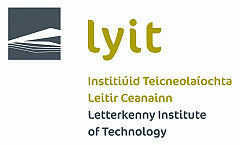Course Description
Unity 3D – Using Light and Shadow in Game Development
Study 365
Overview
Unity 3D is a game engine used to create multi-platform 3D and 2D games for desktops, consoles, mobile devices and websites. Combining high end technology and tools with intuitive and customisable settings, it runs on almost every platform you can think of and is constantly developed and improved by its community of developers. As well as creating games, it also provides features such as ads, analytics, cloud building and multiplayer networking.
Proper lighting and shadowing of the gaming sequences is very crucial for the overall visual effect of the games. Proper lighting and shadowing is also necessary to keep the gamers engaged by making them sense the environment of the games. A successful game developer should have firm grips on the lighting and shadowing components of game development for the proper execution of the games. In this Unity 3D – Using Light and Shadow in Game Development course, you will create real game scenes like the Unity Airlock scene. You will also venture out to Mars and light the Red Planet in stunning ways. The course starts out with a brief introduction and background, and then moves on to topics such as Normals, Realtime Lighting, Light Mapping, Post Processing, and so much more. By the completion of this course, you will walk away with the knowledge to create mind blowing games with the correct lighting and shadowing effects.
COURSE CURRICULUM
1: LIGHT AND SHADOW
Introduction
Historical Background
Normals Part 1
Normals Part 2
Realtime Lighting
Light Mapping Part 1
Light Mapping Part 2
Light Mapping the Airlock Part 1
Light Mapping the Airlock Part 2
Illuminating Mars
Post Processing
Learning outcomes
- Learn about light and shadow in game development and how to implement it using Unity 3D.
- Create real game scenes like the Unity Airlock scene.
- Learn how to venture out to Mars and light the Red Planet in stunning ways.
- Gain an insight into topics such as Normals, Realtime Lighting, Light Mapping, Post Processing, and so much more.
Access duration
The course will be directly delivered to you, and you have 12 months access to the online learning platform from the date you joined the course. The course is self-paced and you can complete it in stages, revisiting the lectures at any time.
Who is this course aimed at?
- Game development beginners
- Job seekers
- Game development professionals
Method of assessment
At the end of the course, you will have one assignment to be submitted (you need a mark of 65% to pass) and you can submit the assignment at any time. You will only need to pay £19 for assessment and certification when you submit the assignment. You will receive the results within 72 hours of submittal, and will be sent a certificate in 7-14 days if you have successfully passed.
Certification and awarding body
Those who successfully complete the course will be awarded the Unity 3D – using light and shadow in game development certificate by CPD & iAP. The qualification will make you valuable to employers, and your motivation at gaining new skills will be recognised.
Other benefits
- Written and designed by the industry’s finest expert instructors with over 15 years of experience
- Repeat and rewind all your lectures and enjoy a personalised learning experience
- Unlimited 12 months access from anywhere, anytime
- Save time and money on travel
- Learn at your convenience and leisure
- Eligible for a NUS discount card
- Free Career Support Service
- 25% Discount on personal Statement and covering letter writing service
- Free Access to Over 150 courses for 2 days (48 hours)
- Free access to course before you purchase (For selected courses only)
| Course Code | S 0907 |
| College Name | Study 365 |
| Course Category | Computers & IT (Information Technology), Multi-Media |
| Course Type | Online Learning |
| Course Qualification | CPD |
| Course Location | Westmeath, UK |
| Course Fee | 29 |
| Course Duration | 365 Days |
| Entry Requirements | Learners must be age 16 or over and should have a basic understanding of the English Language, numeracy, literacy, and ICT. |
| Career Path | Video game producer – £25,000 per annum Video game artist – £20,757 per annum Video game designer – £27,399 per annum |
Course Provider
Study 365
Make Enquiry
Map
Study 365
Cavan
Cavan





Comments, Questions & Reviews